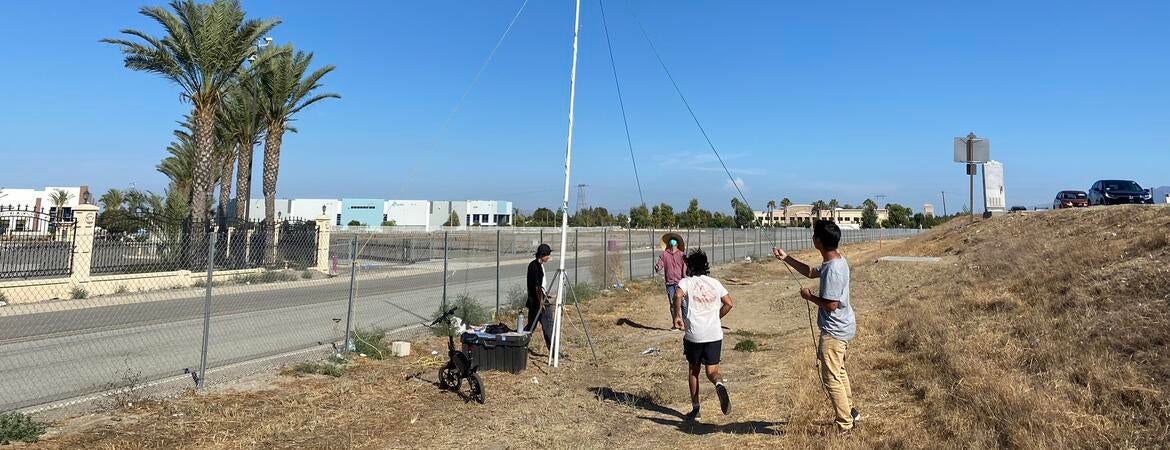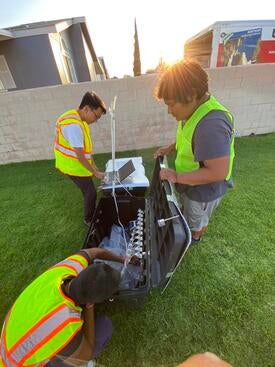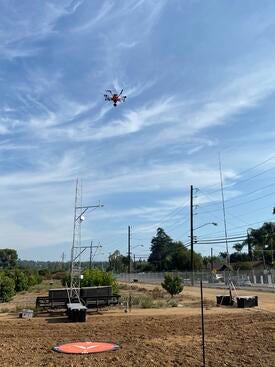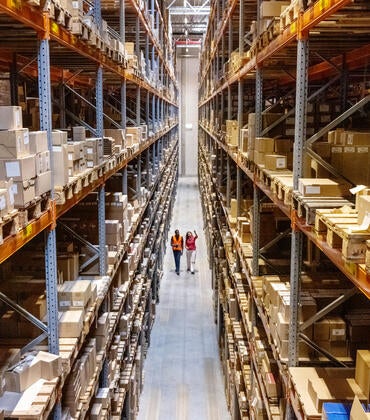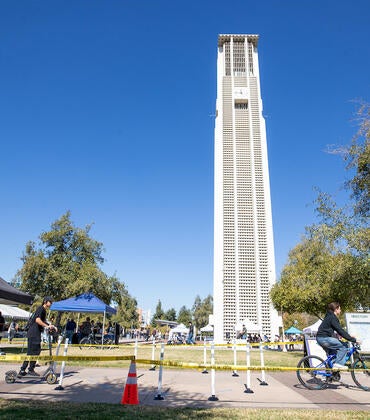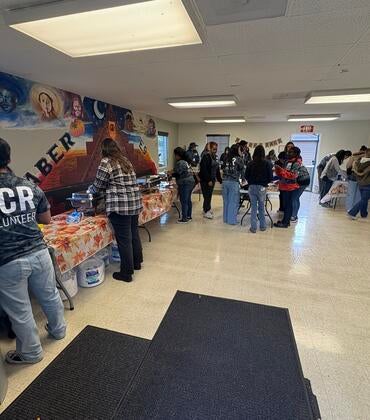A research project by a UC Riverside mechanical engineering team could play an important part in helping to reduce the impact of pollutants from vehicles.
The research team deployed weather towers, air samplers, balloons, and even drones to collect air samples in Riverside and Chino Hills in July and August. The researchers will analyze the data and submit it to the California Department of Transportation, or Caltrans, which will publish by the end of this year a report that it will share with the U.S. Environmental Protection Agency.
The project is a continuation of one begun in summer 2019 when the team placed weather towers and black tote cases containing the samplers around campus. Using UCR’s proximity to the 215 freeway, researchers measured how roadside sound barriers might help reduce the impact of pollutants discharged by vehicles.
The team received a $550,000 research award from Caltrans to collect data to examine whether atmospheric dispersion models — the mathematical simulation for how pollutants spread — can predict the impact of noise barriers on air quality under real-world conditions.
That first part of the study focused on a site next to a freeway with one noise barrier and had positive findings, said Ranga Rajan Thiruvenkatachari, a graduate student in mechanical engineering and assistant project leader.
“What we were able to see was at least a 50% reduction in concentrations next to the noise barriers so the noise barriers had a positive impact on air quality near them,” he said.
The team had planned to continue the research in 2020, also collecting data in areas without a noise barrier and with noise barriers on both sides of the road. However, as the project involved field work by undergraduate students, it was delayed due to the pandemic.
Javier González-Rocha, a UCR Chancellor’s Postdoctoral Fellow in mechanical engineering and lead project manager, and Thiruvenkatachari began preparations earlier this year to resume the project. They hired and trained 18 undergraduate students to help conduct the research at two sites.
“We had a very motivated group that was excited about this project,” González-Rocha said. “They were able to see the research is able to impact communities.”
While others have studied the impact of noise barriers in reducing air pollution under idealized conditions like wind tunnels, Rocha said their study is unique in analyzing vehicle emissions in real-world conditions.
The first site, with no barriers, was along Chicago Avenue in Riverside with air samplers and weather towers placed between 3 to 200 meters away at UCR’s Agricultural Operations site. Four vehicles outfitted with systems that release low quantities of a trace gas drove up and down the corridor for 2 ½-hour periods over three days. Tests were conducted both during the day and night to account for different atmospheric conditions, Rocha said.
The tote boxes deployed along the road collected air samples via pumps that filled plastic bags with air. Researchers took those samples to a lab at the Center for Environmental Research and Technology, or CE-CERT, for analysis. Researchers also used a balloon filled with helium and a drone at higher elevations to collect wind, temperature, and air composition data.
Similar data was collected along Highway 71 in Chino Hills, a location with noise barriers on both sides, over two days.
The research team is now in the process of analyzing the data and conducing a quality assessment, before submitting its findings to Caltrans.
